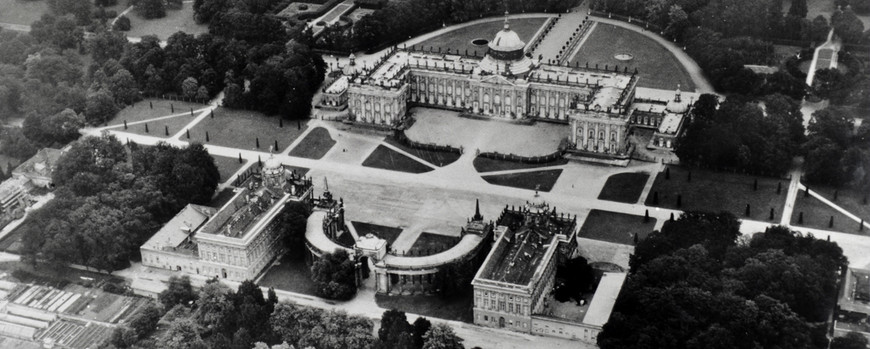The Interwar Period and the Devastation of the Second World War
After the First World War, the Prussian “Administration for State Palaces and Gardens,” which was founded in 1927, presented the Neues Palais as a museum in the style of Friedrich the Great. Beginning in 1921, officials of the Police Academy were housed in the northern Commun. Potsdam citizens later moved into the apartments that were established here. The southern Commun was converted after 1933 to meet the needs of the leadership academy of the Reich Labor Service. Between 1919 and 1945, the Marstall hosted a variety of tenants in quick succession, including the postal service, the police, and from 1937 on the Luftwaffe’s air traffic control academy. The facades of the Communs were renovated for the Olympic Games in 1936. The castle grounds were spared for a long time from Allied bombing runs in the Second World War. The Neues Palais even went unharmed during the “Night of Potsdam” from April 14 to 15, 1945, when almost 1,800 tons of bombs were dropped on the city center. The combat of the war’s closing days dealt the first blows to the ensemble. The theater wing of the palace and the Colonnade were heavily damaged, and the southern Communs was completely gutted by fire. The northern Commun was hit by grenade launchers, yet its basic structure remained intact.








